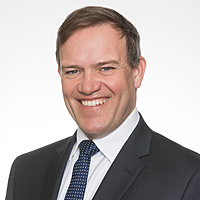Positioning in global healthcare, medical devices and healthcare robots
The healthcare sector is not homogeneous, its companies and sub-sectors are diverse. In contrast, the business activities and products of most banks look similar and it’s easy to compare one bank to another.
This just isn’t the case with healthcare companies. For example, a hospital company (Ramsay Healthcare) is unlike a cochlear implant company (Cochlear Limited) which is unlike a pathology services company (Sonic Healthcare Limited).
To help investors understand the sector we broadly categorise health insurers, managed care organisations, health services companies, hospitals and big pharmaceutical companies at the “value” end of the spectrum and the biotech, MedTech, life sciences and health IT companies in the “growth” end of the spectrum.

COVID-19 and the impact on healthcare investment
Before investing in healthcare it’s useful to cast our minds back two years and consider what an incredible human achievement it was to develop COVID-19 vaccines in such a short period of time. The understandable euphoria around these innovative medicines and widespread knowledge of their global importance drove large inflows from generalist investors into the healthcare sector during the COVID pandemic, and into biotech companies such as Pfizer and Moderna in particular. This coupled with government fiscal intervention and monetary settings designed to prop up economies around the world (creating an unprecedented low-rate environment) drove growth stock valuations up dramatically.
The macroeconomic backdrop for the last twelve months has been challenging for healthcare generally, and ‘growth’ healthcare sub-sectors. The reopening of the US economy “post COVID” has coincided with constricted supply chains, full employment, labour shortages and increasing geopolitical risks—a soft name for the shocking and brutal war being waged in Eastern Europe.
These factors have driven concerns around inflation, rising rates, central bank response, and the risk of a US or global recession in 2023. This has resulted in a very significant drawdown in healthcare growth sectors over the last year, such that the Russell Global 3000 Healthcare Value Index has outperformed the Growth Index by just over 18%.
The healthcare companies poised to perform
Today the healthcare sector is well positioned for a variety of possible macro-economic outcomes. The pullback in growth healthcare valuations has led to greatly improved value in the growth stocks in biotech, life sciences and MedTech sub-sectors with good selective investment opportunities. Simultaneously, the large-cap Pharma and Biotech companies are still priced attractively compared with other defensive sectors, the result of overhanging concerns about drug price policy reforms that have lingered over the sector for years.
If, as predicted, the US economy moves into recessionary territory we expect the defensive characteristics of the healthcare sector, and the big pharma companies to come into their own, driving the outperformance that has been a feature of the majority of the last US recessions since 1960.
At a sub-sector level, the current environment supports a tactical overweight position in big pharma and biotech (including some smaller names provided they have longer cash runways) and an underweight position in MedTech, life sciences and health IT.

Factors impacting MedTech
Compared to the big pharma and biotech sub-sectors, the outlook for MedTech in the immediate term remains somewhat challenging due to the following headwinds:
- Secondary COVID effects such as supply issues associated with lock-downs as China pursues zero COVID policies
- Shortages contrast dye, integrated circuit chip and other components
- Shortages of nurses necessary to drive procedural volumes
- Risks around Titanium alloy used in orthopedics products mined in Russia
- The loss of Ukraine as an important high-volume clinical trial destination
- A temporary shortage of acute patients due to excess deaths associated with COVID in the US
- The pull forward of hospital CAPEX budgets to buy ventilators and other pandemic-related equipment leaving the cupboard bare and only partially replenished resulting in future CAPEX budgets being lower.
On the positive side of the ledger, any recession may be accompanied by low unemployment (which leads to broader health insurance coverage in the US) and the presence of the Affordable Care Act in theory provides health insurance for ‘everyone’.
Tough outlook for dental and Surgical Robots
In dentistry, for example, the innovative clear aligner (e.g. INVISALIGN) treatment category has seen strong growth and saw a brief post-COVID recovery after the dental sector was hit particularly hard during COVID when nearly all elective dental procedures worldwide were cancelled.
We previously sold our holding in Align (NASDAQ: ALGN) on the basis that its stretched valuation was vulnerable to the rising rate environment. However, given that a significant proportion of dental expenditures are not covered by insurance and that aesthetic dentistry can be deferred it is particularly susceptible to weaker consumer demand in a tougher economic environment. In addition, to grow earnings this business also requires more dentists to invest in new capital equipment, and we suspect that a willingness to do this ahead of, and during, a potential economic downturn will likely further restrict volume growth.
Similarly, we have reduced our exposure to the otherwise very attractive healthcare robotics market. Growth in the global market for healthcare robotics has been driven by rapid technological advancements, the ageing population, increased volumes of surgery and the pursuit of high-quality, cost-effective, minimally invasive care.
The revenue models for this market cover the initial capital expenditure, yearly maintenance fees, operator training and consumables. The very significant cost of purchase, installation and training which creates high barriers to switching for hospitals and provides a significant first mover advantage to the incumbent market leader, Intuitive Surgical, manufacturer of the da Vinci robot.
However, in a period of constrained hospital CAPEX expenditure, the multi-million-dollar cost of each robot will see fewer new placements which are also necessary to drive procedural volume growth and consequently consumable revenue growth for the company. During the next 6-12 months it is likely that a good opportunity will arise to gain exposure to the long-term growth of surgical robots.
Whilst the importance of product pipelines, new product cycles, and management teams remains central to investing in MedTech, companies with products and services that are discretionary in nature or require large CAPEX expenditure in hospitals to drive volume growth are likely to underperform in the near term. In this environment as well as an overall underweight exposure to MedTech, a tilt towards companies exposed to more emergent events such as stroke, and cardiac procedures rather than elective events is warranted.
Never miss an update
Enjoy this wire? Hit the 'like' button to let us know. Stay up to date with my content by hitting the 'follow' button below and you'll be notified every time I post a wire.
Not already a Livewire member? Sign up today to get free access to investment ideas and strategies from Australia’s leading investors.
4 topics

